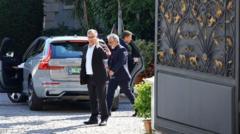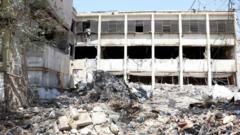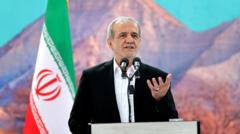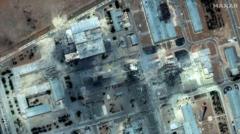Iran is experiencing a resurgence of nationalism fostered by public outrage towards recent military engagements with Israel and the U.S. After enduring significant casualties and damage in the 12-day war, Iran's leadership is leaning on a new form of patriotism to strengthen their domestic position. This shift sees an incorporation of traditional folklore and national symbols long associated with secular nationalists, seeking to unify a beleaguered populace.
Iran's New Nationalism: A Reaction to External Conflict

Iran's New Nationalism: A Reaction to External Conflict
Iran's theocratic regime utilizes nationalism to rally domestic support amidst overwhelming losses from conflict with Israel and the U.S.
During a recent Ashura ceremony, a notable shift was witnessed as Ayatollah Ali Khamenei encouraged patriotic songs previously sidelined in favor of religious observances. The mass turnout, characterized by a somber atmosphere typical of Ashura, transformed when the crowds joined in the singing of "Ey Iran," showcasing a blend of religious and national identity.
The emerging narrative aims to harness public sentiment in response to military setbacks, allowing the rulers to turn nationalistic fervor into a tool for political survival. By transitioning from a strictly religious framework to a more inclusive nationalistic celebration, Iran's government hopes to forge a unified identity during this tumultuous time.
With military defenses weakened and the nuclear program compromised, leadership is now seeking solidarity from the very symbols that once represented their secular opposition. As Iran seeks to reshape its image in the face of significant threats, leaders are attempting to capitalize on heightened nationalist sentiment to ensure the regime's resilience amid economic and political pressures.
The emerging narrative aims to harness public sentiment in response to military setbacks, allowing the rulers to turn nationalistic fervor into a tool for political survival. By transitioning from a strictly religious framework to a more inclusive nationalistic celebration, Iran's government hopes to forge a unified identity during this tumultuous time.
With military defenses weakened and the nuclear program compromised, leadership is now seeking solidarity from the very symbols that once represented their secular opposition. As Iran seeks to reshape its image in the face of significant threats, leaders are attempting to capitalize on heightened nationalist sentiment to ensure the regime's resilience amid economic and political pressures.





















